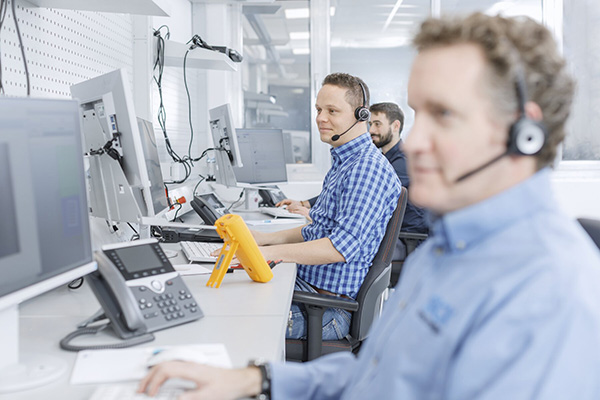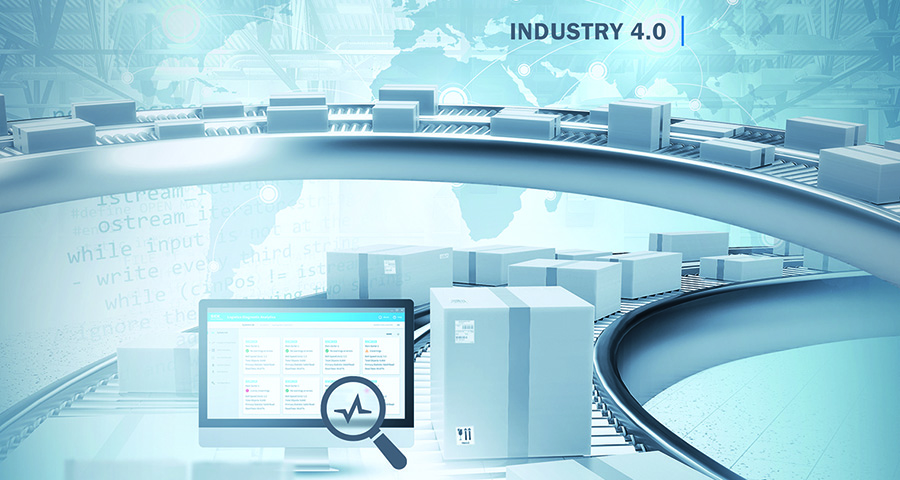Deep Learning is the Future for Increased Efficiencies and Virtual Machine Support
As machines learn to think, SICK’s deep learning technology helps machines analyze large quantities of data to provide better virtual support.

If greater efficiencies are to be made at each stage of production, machines must adapt and become smarter. Interest in intelligent machine behavior is increasing, and with it, the challenge of digital technology. Sensors remain the source of information, and integrated software offers a solution for evaluating and communicating networked data. However, the Industry 4.0 trend means there is an urgent need for “reformed” thinking in IT on data complexity. Deep learning is essential and it’s the path SICK and its customers are taking for modern plant processes.
Deep learning is a machine learning technique and is often seen as a significant part of the future of artificial intelligence. SICK applies this key technology to its sensors, offering customers added value for greater productivity and flexibility.
Deep learning machines mimic thinking like a human
Deep learning requires algorithms capable of detecting and processing vast, complex amounts of patterns and data. The artificial neural network mimics human thinking and learns from examples. It learns from experience and learns to adapt to new, updated information.
As a result, a range of optimizations are possible today that would have been unthinkable just a few years ago. Machines and plants, in combination with intelligent data and specialized sensors, can find solutions to the most complex tasks.

Applying Deep Learning the Logistics Automation
Most of SICK’s current deep learning projects are in the field of optical quality inspection. In logistics automation, deep learning cameras can automatically detect, verify, classify, and localize “trained” objects or features by analyzing the taught-in image base.
For example, they can check whether any flats are present in the sorter trays, optimizing sorter cell assignment and increasing throughput. They detect strapping bands on parcels − even white bands on white parcels. This improves quality control in the automatic packaging process and makes sure that transported objects are analyzed.
If packages are dented or damaged, or if the material properties of the parcel need to be determined, SICK sensors can intelligently capture and evaluate structures or features during live operation. They ensure that the next steps in the sorting process are initiated. This feature is unique in this form and could previously be performed only by the human eye. The ultimate aim of all SICK projects is to apply deep learning to improving processes and increasing plant effectiveness.
Deep Learning Enables Virtual Machine Services and Support
Once deep learning processes are put in place, it is essential to continue to maintain plant effectiveness by keeping machines, sensors, and other technology in prime condition. Services from SICK ensure success throughout the product and machine lifecycle. And now with the addition of virtual machine support available through SICK, manufacturers can access a SICK expert whenever they need one.
These industry leading experts have decades of experience in designing, specifying, commissioning, and supporting technologies such as machine safety, industry 4.0, integration, machine vision, and more. These services can be access at any time, from anywhere, day or night for a virtual consultation to ensure all processes run smoothly to maintain deep learning technology.
SICK’s portfolio of services and support can start with consulting (either on-site or virtually) and help in selecting appropriate products, but that’s just the start. SICK offers a full menu of pre- and post- sales support, maintenance, and lifecycle services including:
- SICK’s team can meet with clients (virtually or on site) to understand application needs first hand, and from there, come up with a scope of work and configuration using appropriate products and technology.
- Customer Project Management (CPM) resources are used for complex projects. A single point of contact is assigned to ensure timely communication and facilitate accurate information exchange of throughout the project. Any necessary changes to schematics or the bill of materials for the project is coordinated through CPM as they arise.
- Integration engineering, so that system elements such as readers, photoeyes or third party devices are linked to appropriate warehouse automation control systems, fieldbuses, or other control or industrial software.
- Training, which can be customized for different job roles, from basic training for supervisors, front line workers, to more advanced training for an organization maintenance, control engineering, or plant engineering staff.
- On-site technical support as well as preventative maintenance services.
- On-site performance inspection visits in advance of peak seasons for order fulfillment. This popular option ensures readers, sensors, scales— everything in the solution—is working correctly.
- Safety services for asset protection and operator safety.
Top specialists, complex algorithms, high computing power
The demand is not for a universal solution. Rather, the focus is on a solution tailored to a specific case. Although modern 2D and 3D cameras are continually becoming faster and more powerful, their performance is currently restricted by traditional image processing algorithms. In order to assess different applications and conditions, SICK’s deep learning experts work closely with the client’s process and quality experts. Their unique process expertise forms the basis of simulation training and the heart of subsequent deep learning algorithms in the sensor.
A complex network architecture processes the enormous quantity of information. In spite of this, the time needed to train a deep learning network comes to little more than a few hours. Deep learning networks can also be retrained and adapted to new conditions. For big data pools and neuronal network training, SICK uses powerful independent, internal processing and IT systems. The deep learning algorithms generated are placed on the sensor locally via the cloud, making them fail-safe and directly available on an intelligent camera.
There’s still a long time to go before machines truly reign supreme, yet even today, deep learning is achieving impressive results and offers many benefits. The essential work, however, is still being done by humans. Only time will tell how many companies and industries will decide to fuel their growth by stepping up their investment in this digital technology.

Article Topics
Mobile & Wireless News & Resources
Vehicle-mounted computers: Beyond rugged Manhattan Associates selects TeamViewer as partner for warehouse vision picking ProGlove and topsystem partner on hands-free picking solution CaPow’s power-in-motion solution eliminates charging downtime International Retailer Optimizes Efficiency Through Asset Lockers Writing the book on streamlined data capture 60 Seconds with Diego Vega from the Hanken School of Economics More Mobile & WirelessLatest in Materials Handling
Vehicle-mounted computers: Beyond rugged New packaging idea for the cold chain Autonomous Mobile Robots (AMRs) offer modern solution to challenges of traditional farming Hyster-Yale Group provides students with real-world AI experience in 2024 Kellogg Design Challenge KION Group’s board extends CEO Rob Smith’s contract by five years UniCarriers Forklift joins Quality Equipment in opening celebration of new location Largest Automate on record opens in Chicago on Monday May 6th More Materials HandlingSubscribe to Materials Handling Magazine

Find out what the world's most innovative companies are doing to improve productivity in their plants and distribution centers.
Start your FREE subscription today.
April 2024 Modern Materials Handling

Latest Resources










